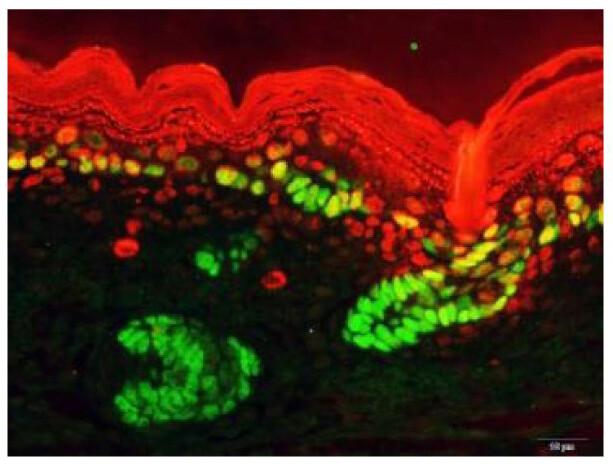Penn Study Demonstrates Genes' Major Role in Skin and Organ Development
Knocking out one or both crucial regulatory genes caused cleft lip, skin barrier defects, and a host of other developmental problems in mice, according to new research from the Perelman School of Medicine at the University of Pennsylvania, hinting that abnormalities in these molecular pathways could underlie many birth defects that are presently not well understood. The two closely related regulatory genes are active in the normal development of mammals and govern how RNAs produced from the genes are joined to make final versions of the encoded protein, a process called alternative splicing.
The study, published this week in eLife, concerns the genes Esrp1and Esrp2, which have become the focus of much research in recent years, due to their evident roles in development and cancer.
“Clearly there are many important roles for these genes in facial, skin and, organ development, and we’re only just starting to catalogue them,” said Russ P. Carstens, MD, an associate professor of Medicine (Renal-Electrolyte and Hypertension Division) and Genetics.
Carstens and his colleagues were the first to identify Esrp1 andEsrp2, in 2009, as molecular switches for alternative splicing, in which the initial RNA transcript of a gene’s DNA code is cut up and put back together in different arrangements. Alternative splicing affects most mammalian genes, and effectively enables the production of distinct protein variants (called isoforms) from the same gene.
Which protein isoforms are produced depends on the cell type and other physiological circumstances. Esrp1 and Esrp2 are active specifically in epithelial cells, which form the skin, the inner layers of the gut and lung, and other tissues in the body. In those cells the Esrp1 and Esrp2 proteins enforce epithelial-specific splicing isoforms for hundreds of different genes, as Carstens and his team have shown in studies since 2009.
What’s more, the researchers discovered two years ago that the suppression of Esrp activity helps to enable a process called the epithelial-mesenchymal transition (EMT), in which epithelial cells acquire properties allowing them to detach and develop into new tissue. EMT is crucial for normal embryonic development, but also operates in wound healing, and when abnormally switched on, can enable the spread of tumor cells.
These early studies were in laboratory-cultured cells. In the eLife study, Carstens and his colleagues engineered mice without Esrp1, Esrp2, or both. They found that mice lacking Esrp1 alonewere born alive but with cleft palate and cleft lip deformities that prevented feeding. All died within hours.








